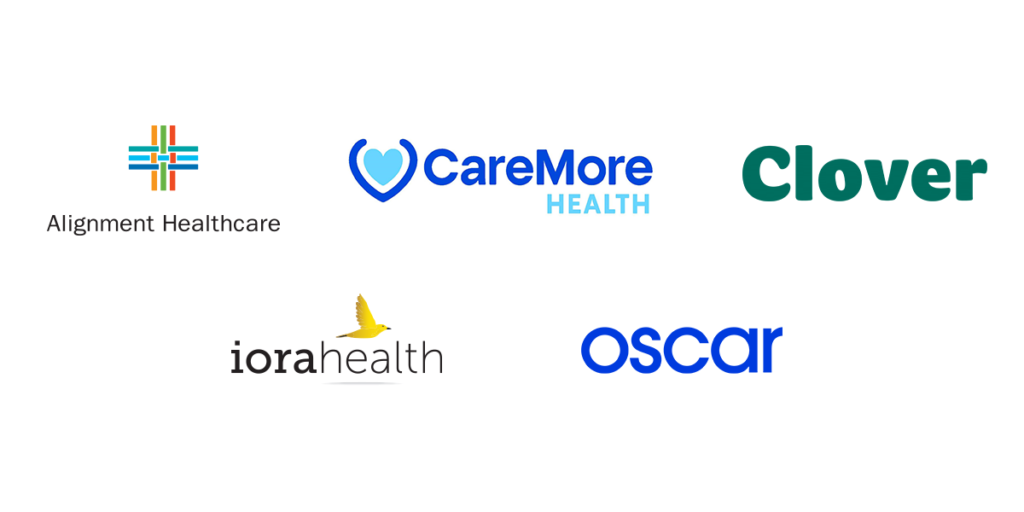Next-generation payers and providers: Setting a strategy for tech-enabled innovation
You’ve probably noticed: there are some new payers on the block—all founded with the intention of delivering an enhanced, technology-supported consumer experience. Incumbents, investors, and news outlets are closely watching their every move—from new market expansions to provider partnerships. Many of these companies launched after the passage of the Affordable Care Act (ACA), as coverage expansion created new individual insurance opportunities and marketplaces. At the same time, these companies responded to an activated consumer market, banking on the belief that patients would choose an insurer who could better control healthcare costs and provide a higher-quality experience.
So what makes these companies unique from incumbents? These new insurance players are not beholden to any legacy payment models, infrastructure, or status quo mentalities. Indeed, these companies get to start from scratch to redefine how patients interact with their health plan.
New providers are also stepping onto the scene. Similar to payers, they are reimagining the care experience and patient-provider relationship by shedding traditional fee-for-service payment models that too often stifle innovation in health and drive up utilization of care. Instead, they embrace value-based models of care, with intentional investment in “upstream” monitoring and primary care to ensure patients receive support and guidance to manage their health on an ongoing basis—not just when they make it to the doctor’s office.
As these next-generation payers and providers (which we’ll refer to as “NGPPs” throughout this post) reimagine how to best care for their populations, one thing is clear: technology is the critical enabler of most innovative approaches. Using predictive analytics to guide patient interventions, supporting patient choice via price and outcome transparency, providing on-demand care via telemedicine, and helping care teams make the best data-driven decisions all hinge on technology investment.
To better understand the current landscape, we interviewed five NGPPs—Alignment Healthcare, Clover Health, CareMore Health, Iora Health, and Oscar Health. While each has received its fair share of coverage and conversation, we wanted to explore how these organizations think about technology and innovation.
In particular, we wanted to know:
- What technology solutions have been successful in helping NGPPs manage their core business and member populations?
- How do NGPPs think about innovation internally, and what do they decide to source externally?
- What is each NGPP’s philosophy on partnering with startups, and what does that look like in action?
We’ve outlined five key findings from our conversations below, and hope the innovation community will glean insights from their strategies—as innovators and buyers of innovation—to work toward improving the quality, safety, and accessibility of our healthcare system.

Alignment Healthcare: Medicare Advantage plan (in CA), population health management partner with MA health systems and plans (in NC and FL)
CareMore Health: Provider for Medicare and Medicaid patients (in AZ, CA, CT, GA, IA, NV, TN, TX, VA, Washington DC)
Clover Health: Medicare Advantage plan (in GA, NJ, PA, TX)
Iora Health: Provider (in AZ, CO, CT, MA, NH, NY, WA)
Oscar Health: Payer (in CA, OH, NJ, NY, TX, TN)
1. Technology should enable human-centered care, not replace it
Each NGPP emphasized its commitment to building care teams that form compassionate, ongoing relationships with members. Technology is secondary to these person-to-person connections—and each organization discussed the importance of leveraging solutions that keep patient and provider well-being at the center of their innovation strategies.
Here are a few ways these organizations support this mission:
- Iora Health practices employ collaborative care teams consisting of physicians, nurse practitioners, nurses, health coaches, behavioral health specialists, and administrative staff. In order to help care teams prioritize their time, Iora provides analytics during each practice’s morning huddle. To plan care for high-risk patients across their population, care teams assign an Iora Worry Score—based on clinical data and care team inputs—to prioritize effort for those most in need.
Care teams are the intervention for our patients, and our technologies support them.
Dr. Andrew Schutzbank, VP of Product and Technology, Iora Health
- By creating holistic profiles of its patients using clinical, personal preference, and social determinants data, Clover Health is better able to identify those with higher care needs and intervene appropriately. While the interventions are technology-enabled, Clover creates impactful human connections between its clinicians and members, in order to produce better health outcomes.
2. Each NGPP has a defined, but unique, approach to startup collaboration
NGPPs represent a notable opportunity for startups as buyers of innovation. If startups can offer complementary solutions, these NGPPs have demonstrated savviness at integrating external innovation into their businesses.
When working with external vendors, each NGPP has largely followed one of two paths: partnering with startups to co-develop solutions or acting as a traditional customer of existing solutions. This decision generally reflects the NGPP’s desired balance between customization of the solution and preservation of internal resources. Co-development yields solutions tailored to the particular NGPP’s infrastructure and internal processes, but often requires significant internal resources, trust, and shared risk-taking. That’s why some NGPPs prefer to maintain a customer-vendor relationship—paying startups for their “as-is” solutions.
Rather than oscillating between the two, the NGPPs we interviewed generally stuck to one of these approaches. In this way, NGPPs are looking for a consistent, repeatable process they can perfect in terms of how they partner with startups. For example:
- Oscar Health’s expectation for any startup is that they be open to co-developing solutions to align the startup’s product with the ongoing iteration of Oscar’s own products and workflows. This ensures seamless integration across its systems, which Oscar largely built in-house since the solutions the company wanted to offer (e.g., provider apps, telemedicine services) were not readily available when Oscar was founded back in 2012. Oscar’s partnership with Lob, a third-party API that sends hard-copy documents to members, has been particularly successful. Over time, Lob has become embedded in Oscar’s technical infrastructure to ensure rapid delivery of time-sensitive letters—including member bills, notices of payment to physicians, and updates regarding physicians’ contracting status with Oscar.
- Iora prefers to play the role of customer advisor—paying startups for their products and suggesting future iterations. While co-development may seem enticing on the surface, Dr. Andrew Schutzbank, VP of Product Development, noted, “Co-development means you’ve squared the number of problems you have.” Co-development can become tricky quickly as the two companies are often different sizes and interested in building out different parts of the solution. Instead, Iora prefers to keep things simple by paying companies for products that can easily integrate into its providers’ workflow. For example, Iora’s in-house, integrated EHR, “Chirp,” is augmented with integrations from technology vendors like Wolters Kluwer’s UpToDate, which incorporates clinical content into Chirp, and RubiconMD, which allows primary care physicians to conduct eConsults with specialists.
- CareMore works with technology vendors that increase coordination of care when a commercial product satisfies the organization’s needs and requires less customization than an internally developed product would. This approach enables CareMore both to adopt cutting-edge technologies and contract out the maintenance and support solutions that external vendors frequently deliver. To underscore the importance of long-term support for externally sourced solutions, Omid Toloui, CareMore’s VP of Digital Health, uses the analogy of building a new home—when you first build your dream home, everything works perfectly; however, the home will start to degrade if you do not invest time, money and energy to maintain it. Without upkeep, your once perfect home will no longer serve the needs of the people living in it. So it is with new technologies—if one fails to invest in continual maintenance and technological upgrades, even the best solutions will eventually cease to fulfill the organization’s needs and lose their technological advantages in the marketplace.
3. NGPPs seek startups that can turn member data into actionable insights to improve the patient experience and clinical workflow
When evaluating startup and vendor partnerships, NGPPs seek solutions that seamlessly plug into their central data repositories and foundational platforms such as the electronic health record (EHR), patient portal, and customer relationship management system (CRM). Most noted that the startup tools they’re most interested in drive user engagement and deliver actionable insights to care teams (such as telemedicine and connected devices).
- To support its model, Alignment Healthcare designed a command center in California, where care teams and IT staff leverage real-time and historical clinical, claims, lab, pharmacy, and patient demographic data to risk stratify and unearth insights about its populations. When looking for solutions to enhance the member experience, Alignment seeks startups that can derive actionable insights from—and connect into—its command center. Providers should not be spending time coordinating across multiple technologies—thus, they look to startups to help aggregate fragmented data, offer recommendations, and provide them at the right moment to ensure providers can intervene effectively.
- All of Oscar’s user-facing solutions—such as its “Doctor on Call” telemedicine service—connect directly to its homegrown, backend infrastructure. This way, all member interactions feed structured data back into its core system, enabling a comprehensive (and iterative) snapshot of every member. With this robust information, care teams have more data points to evaluate a given member’s health status, and intervene accordingly. In the future, Oscar plans to plug additional startup digital health solutions (e.g., fertility apps) into its existing infrastructure. This will allow Oscar to continue its own internal innovation ethos, as well leverage the startup ecosystem, to build out additional member services on top of its existing platform and data.
- CareMore dedicates resources to ensuring that its robust care teams communicate with patients, families, and primary care providers on a regular basis. To facilitate this communication and improve the effectiveness of these teams, CareMore is likely to invest in new technologies and work with vendors who can improve care coordination processes. For example, CareMore’s partnership with TigerConnect helped unify the fragmented communications (e.g., phone calls, text messages, faxes and emails) between CareMore clinicians and contracted primary doctors and specialists. Areas of interest for future development include drawing proactive insights from remotely connected biometric devices and enabling clinicians to complete their jobs quicker and more accurately.
4. NGPPs aim to move care into the home, but haven’t adopted remote monitoring devices at scale
While the status quo has been to build analytics on historical patient claims data, the value of real-time data has shifted attention to the home. This information is particularly desirable to care for Medicare Advantage (MA) patients, many of whom are served by NGPPs.
- Alignment leverages remote monitoring and telemedicine solutions to intervene with the sickest 10% of its members. Members most likely to be selected for the program have chronic or high-burden diseases (e.g., congestive heart failure, diabetes). Those selected receive wireless monitoring devices, such as blood pressure cuffs, pulse oximeters, and connected scales. They’re also provided Samsung tablets, which serve as a platform for video calls with care team members and patient surveys to assess understanding of their treatment plan. While Alignment started the program with its highest-risk patients, the company hopes to broaden its reach and provide connected healthcare to all of its members.
Though all NGPPs conveyed the promise of remote monitoring tools, some remain skeptical that remote monitoring data can be trusted, delivered to the right provider, and yield an appropriate response. These organizations are waiting for more clinical research validating this approach before considering implementation at scale.
- Iora sees remote monitoring playing a significant role in future care delivery, but believes these tools have some way to go before providing real-world value to physicians. Dr. Schutzbank outlined three key challenges to be addressed before implementation at scale: first, the products need to advance in their ease of use in terms of wireless connectivity and the way they are applied to the body; second, academic researchers need to demonstrate the efficacy of clinical actions based on certain remote monitoring signals; and third, care teams need to build new competencies to leverage remote monitoring data, defining when and how it should be used for clinical decision-making.
- Clover echoed the importance of usability for its demographic and avoiding devices that require any active data entry or login information the member would need to remember. While additional data sources allow for more personalized care, the data needs to be accurate and free of user-error. The company sees potential to integrate remote monitoring into the daily lives of its MA plan members, particularly as the participants in its in-home primary care program grows from its 500 current members to a projected 1,500 by the end of 2018.
To develop additional, accurate data sources that inform care delivery, implementation and collection needs to be as simple as possible for our members.
Dr. Sophia Chang, Chief Clinical Informatics Officer, Clover Health
5. Successful organizations adopt a plan for implementation of innovation, not just experimentation
Implementation is the key to innovation. While testing solutions is an important first step, NGPPs must dedicate significant resources to implementation at scale. Some of these organizations have established a team dedicated to refining solutions, end-user testing, and deployment across the entire served market. Most importantly, NGPPs can more consistently and successfully adopt new solutions if they create a repeatable process for assessment, implementation, and continuous maintenance when working with startups.
- CareMore’s Digital Health Team—dedicated to evaluating and implementing digital health innovations across the enterprise—developed a playbook that outlines appropriate steps to ensure a consistent, replicable process for integrating new technologies into the CareMore model. That process begins with care teams collaborating to identify areas of unmet need before seeking out solutions. After conducting a comprehensive evaluation, the Digital Health Team seeks out appropriate solutions in the marketplace. The team-oriented approach is vital to creating groups of internal champions and implementing innovation at scale. In addition, the team-based method aligns all of CareMore’s employees—from innovation to operations—with the solution’s worth and rollout plan. Storing this information across multiple departments further assures that institutional knowledge is shared across the organization.
Pilots have finite lifespans—at the end, the solution lives or dies. Instead, CareMore is focused on incubation: growing a solution from infancy and dedicating resources to ensure its continued growth and success.
Omid Toloui, VP of Digital Health, CareMore Health
- To test innovation before rolling it out at scale, Oscar leverages the “Oscar Center”—a Brooklyn-based brick and mortar primary care facility where care teams beta test new technologies. Technologies brought to the Center are fairly far along in the development process, and Oscar looks to care teams to provide iterative feedback. By putting care teams at the center of the innovation process, Oscar seeks to develop solutions with the potential to be successfully deployed across all of its markets. Once a product is implemented at scale, Oscar’s product development team continues to connect with in-network provider partners to solicit feedback and iterate accordingly.
- Given the challenge of adoption of new technology-based solutions among seniors, Alignment proactively selects members to test new technologies. To do so, Alignment evaluates a member’s health risk score, as well as his or her likelihood to engage with the technology in question. Alignment then develops individualized care plans that use the new technology for the highest risk patients most likely to engage. If effective, it will deploy the technology to the broader population.
Further information
For full access to the report—including a case study of each NGGP—become a Rock Health partner. Email partnerships@rockhealth.com for more information.
Acknowledgements
This report would not have been possible without the help of a number of individuals who have graciously shared their expertise.
Special thanks to Andrea Aldana (Alignment Healthcare), Sophia Chang (Clover Health), Tisson Mathew (Alignment Healthcare), Liz Robau (Oscar Health), Sonia Samagh (DaVita HealthCare Partners), Andrew Schutzbank (Iora Health), Khan Shoieb (Oscar Health), Andrew Still-Baxter (Clover Health), Omid Toloui (CareMore Health), and Alison Trinidad (Alignment Healthcare) for their time and insights.

